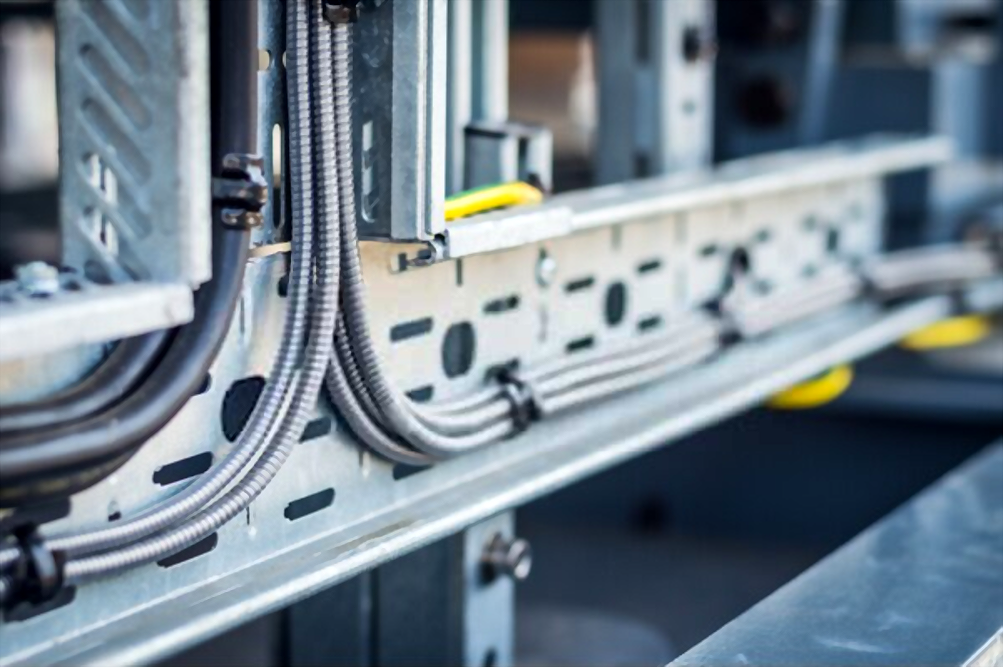
3 Commonly Used Cable Trays And Their Benefits
What are the reasons for using cable trays and how to choose a specific type of cable tray?
The main cables will need to be run over a cable tray wiring system, so which type of cable tray should be used? There are three types of cable trays to choose from if you want one: ladder, ventilated bottom, or solid bottom.

In order to built the cable tray that is best suited to the needs of the project, the cable tray manufacturer in UAE should carefully determine why a cable tray system is needed in the first place. In some situations, such as the following, the National Electrical Code (NEC) specifies what type of cable tray should be used:
Ladder or ventilated trough cable trays must be used to install Type MV and single conductor cables. A solid bottom cable tray is not allowed to be used for single conductor cables or Type MV cables [1993 NEC Section 318-3(b)].
Cables that are laid in Class II, Division 2 Hazardous (Classified) Locations (Dust) must be placed in ventilated, ladder or trough trays. The 1993 NEC section 02-(b) prohibits the installation of solid bottom cable trays in Class II, Division 2 locations.
Ladder Cable Trays or Cable Ladders
Approximately 75 per cent of cable tray wiring systems are installed using ladder cable trays. Cable trays with this type of design are the most popular because they offer so many desirable features:
- The ladder cable tray does not have covers, allowing just as much air to flow across the cables as possible. As a result, the heat produced by the cable’s conductors can effectively escape. Cable tray wiring systems properly designed will not have to worry about the conductor insulation exceeding its maximum operating temperature. This will prevent premature cable ageing caused by excessive operating temperatures.
- In the case of non-horizontal ‘Cable tray’ runs or when the positions of the cables need to be maintained in horizontal cable tray runs, the ladder cable trays provide convenient anchors for tying down the cables. A single conductor cable installation must have this capability. Under fault conditions such as a short circuit event, if the single conductor cables are not securely anchored to the cable tray, the fault current produced by the fault current will force them to move from the tray.
- Ladder cable trays can have cables exiting or entering from the top or bottom of the trays. Cables entering or leaving conduit can be terminated upright or inverted with clamps mounted to the cable tray side rails at either the top or bottom.
- Ladder cable trays don’t allow moisture to collect.
- Whenever working space is limited, cable trays with bottom access may make it easier to install small diameter cables: control instrumentation, signal, etc.
- Cable ladder trays typically have 9-inch rung space. Various sizes of cables can be accommodated with this spacing. PLTC and TC cables with small diameters benefit from this spacing, as there is no visible drooping of the small cables between the rungs as a result of the support distance. The 12″ or 18″ rung spacing provides adequate cable support, though small diameter cables may droop between rungs. According to NEC Section 318-3(b)(1), for single conductor cables 1/0 through 4/0 AWG, the maximum distance between supports is 9 inches.
Ventilated Trough Cable Tray
It is purely for aesthetic purposes that ventilated trough cable trays are preferred over ladder cable trays. This prevents small cables from drooping. Compared to the ladder cable tray, the ventilated trough cable tray provides slightly more cable support, but the difference is not significant. It has no effect on the cables’ performance or lifespan.
Solid Bottom Cable Tray
The main reason behind choosing solid bottom cable trays (with covers) is their ability to shield EMI/RFI for highly sensitive circuits. As long as the completed installation has no breaks or holes, a solid steel cable tray with steel covers will provide a good degree of shielding.
A disadvantage of solid bottom cable trays is that moisture can accumulate in the trays. If the cable tray is not to be used for shielding, 1/4-inch drain holes can be drilled in the bottom of the tray at three-foot intervals (at the middle and very close to the sides).
It is common practice for engineers and designers to specify cable trays (often with covers) with solid bottoms in the belief that all electrical circuits must be enclosed in metal. However, cables mounted in the trays are designed for such applications. It is extremely rare for cables to fail when mounted in solid bottom trays. In solid bottom cable trays, cable support issues do not lead to cable failures.

0 comments
Write a comment